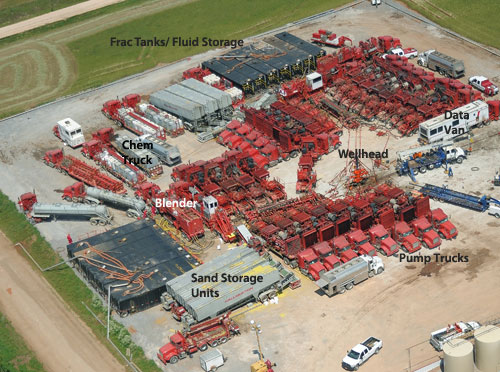Share:
SITE SET UP
Consistent with the Energy Policy Act of 2005, the U.S. Environmental Protection Agency (EPA) published a final rule in 2006 that exempts stormwater discharges of sediment from construction activities at oil and gas exploration and production operations from the requirement to obtain a National Pollutant Discharge Elimination System (NPDES) ‡ stormwater permit as long as stormwater runoff to waters under the jurisdiction of the CWA are not contaminated with oil, grease, or hazardous substances. With this exemption, EPA specifically encouraged the oil and natural gas industry to develop and implement Best Management Practices (BMPs) to minimize the discharges of pollutants, including sediment, in stormwater both during and after construction activities.
In an effort to meet the expectations of EPA under this rulemaking — to incorporate successful voluntary stormwater management practices into day-to-day operations – the American Petroleum Institute (API) and the Independent Petroleum Association of America (IPAA), industry associations, and company representatives (referred to as the Stormwater Technical Workgroup (SWTW)), built upon the 2004 guidance document entitled Reasonable and Prudent Practices for Stabilization (RAPPS) of Oil and Natural Gas Construction Sites. Through field validation of the RAPPS, gap identification, and concerted program improvements, the SWTW developed a voluntary guidance document that, if implemented correctly, will serve as a readily applicable tool for operators to use in order to efficiently and effectively maximize control of stormwater discharges at oil and natural gas exploration and production activities throughout the contiguous U.S.
The construction of an oil and gas site is generally conducted using Best Management Practices similar to those listed in the RAPPS document and the EPA Construction Site Stormwater Runoff Control website ‡ This includes the construction of roads for the transport of heavy equipment such as the drill rig, leveling of the site, structures for erosion control, the excavation of pits to hold drilling fluids and drill cuttings, and the placement of racks to hold the drill pipe and casing strings. During the development of the site and hydraulic fracturing job, you can expect to see an increase in heavy traffic on the roads surrounding the site as equipment such as the drill rig, bulldozers, graders, water trucks and other heavy equipment is transported to and from the site. This traffic increase usually lasts a few weeks, and once well drilling, completion and fracturing are finished, should decrease substantially.

Depending upon the specific conditions of the site and the nature of the drilling fluid, drill pits may or may not be used and may be lined with special liners to prevent fluid infiltration into the subsurface.
Once the well has been drilled and constructed and the drill rig removed, the site is prepared for well stimulation. The photo above shows the typical layout of a site that has been prepared for hydraulic fracturing. The surface facilities and layout typically involve a number of pieces of mobile equipment including fracture fluid storage tanks, sand storage units, chemical trucks, blending equipment and pumping equipment. All facets of the hydraulic fracturing job from the blending and pumping of the fracture fluids and proppants – solid material, usually sand, that is pumped into fractures to hold them open – to the way the rock formation responds to the fracturing, are managed from a single truck often referred to as the Data Monitoring Van.